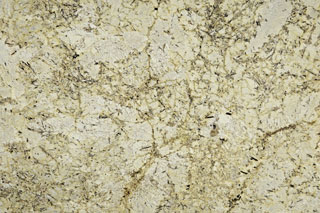
There are many options available today when it comes to countertop design and the type of material to use. Many homeowners and designers prefer natural stone materials, as they are of better quality and offer more value to a home. Some natural stones used for countertop design, whether it be for a kitchen space, bathroom or wet bar, include:
-
Marble;
-
Slate;
-
Sandstone;
-
Travertine;
-
Limestone;
-
Onyx; and
-
Italian granite.
Italian granite is one of the most preferred choices for countertop materials, mainly because of the stone's durability and resistance to elements like heat and staining.
What is Granite
Granite is made from cooled lava and magma, making it an igneous stone. One of its key features is its strength, which is a result of how the stone is formed, occurring deep under the earth's surface where it is subjected to intense pressure levels.
There are many components to granite that are responsible for its uniquely freckled appearance, including minerals such as:
-
Feldspar;
-
Silica;
-
Mica; and
-
Quartz.
These minerals give granite slabs their one-of-a-kind appearance, making them like highly-valued pieces of art. Like snowflakes, fingerprints or an original painting, every granite stone is truly unique, with no two ever being the exact same.
In addition to its beauty, Italian granite pieces are also very functional, especially for home design applications.
When designing kitchen countertops, fireplace surrounds, indoor flooring and outdoor fire pits, Italian granite is a logical choice for material. Granite can handle exposure to very hot temperatures of up to 12,000 degrees Fahrenheit. Therefore, Italian granite is extremely resistant to burn and char marks.
Italian granite is also great at concealing other organic stains and is less vulnerable to scratching, etching and chipping, especially when compared to other natural stones. Its integral composition makes it very dense, matching the strength of diamonds.
The type of finish used on Italian granite greatly alters its appearance, as well as its functionality. Homeowners and designers should remember this fact when working with Italian granite in order to meet style demands, as well as practicality requirements. The three most common types of finishes are:
-
Honed;
-
Polished; and
-
Satin.
Where a honed granite finish appears matte with a shallow depth of colour, polished granite is very glossy and reflective, with a great depth of colour. An advantage of honed granite is the fact that it does not get slippery when wet. This feature is one of the main reasons why a honed finish is often preferred for granite floors. An advantage of a polished granite slab is its resistance to staining and absorbing moisture. In this sense, polished granite slabs make great kitchen countertops.
The appearance of satin granite slabs fall between honed and polished finishes. Satin granite pieces are neither matte nor glossy and are usually chosen to satisfy personal style demands that prefer the satin finish.